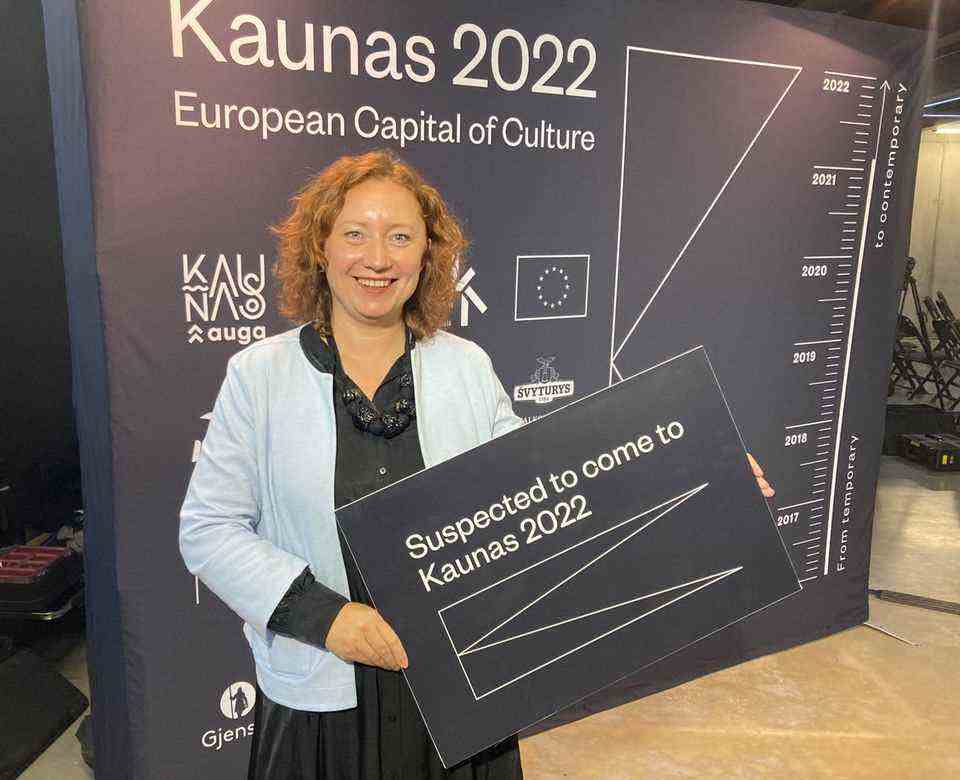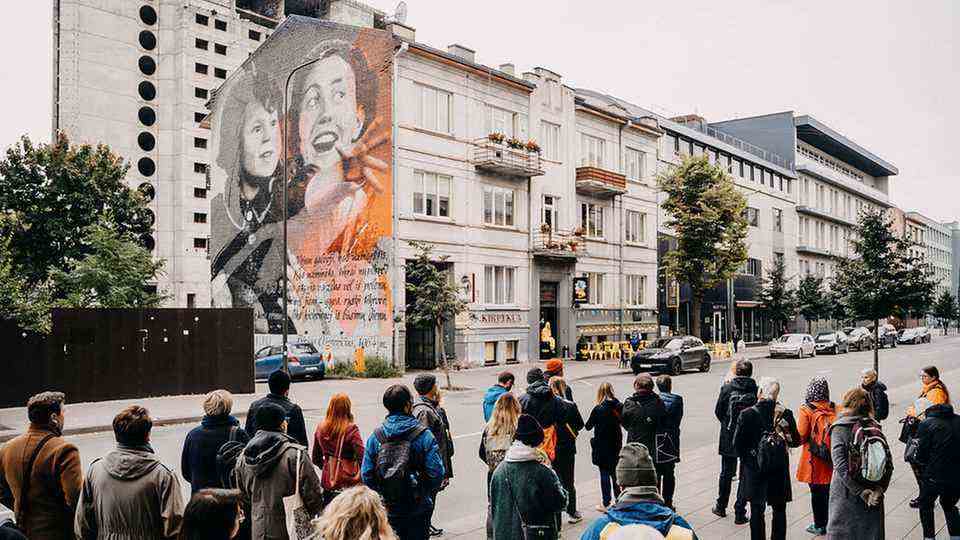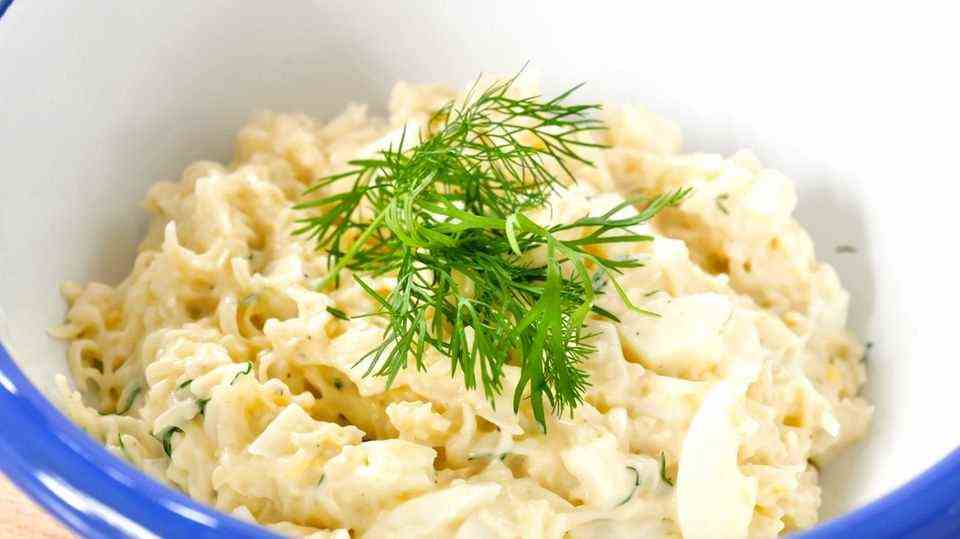European Capital of Culture 2022, part 2
Kaunas in Lithuania: A city is looking for its myth
The Basilica of Christ Resurrection in Kaunas: The church was built in 1940 in the New Objectivity style.
© Getty Images
The second largest city in Lithuania is often overshadowed by the capital Vilnius. But the Capital of Culture year should change that forever in 2022 – with memories of the heyday and trauma.
The program is ready and the warm-up has already begun: Kaunas is eagerly awaiting its start as European Capital of Culture 2022 – to reinvent itself, forge a new myth and sharpen its profile. Lithuania’s second largest city wants to present itself in a modern and European way, with a lot of culture, history and self-confidence. This should help to step further out of the long shadow of the capital Vilnius.
Kaunas has an “extraordinary, complex, checkered history”, emphasized the Lithuanian Minister of Culture Simonas Kairys at the presentation of the program for the year of the European Capital of Culture. It is scheduled to officially open on January 22nd. In the city, which is surrounded by several hills and at the confluence of two rivers, the “whole kaleidoscope of epochs and political systems” is visible.
The core of the program is the “Myth of Kaunas” trilogy, a series of events taking place over three weekends. Designed by artists from Lithuania and abroad, a new unifying and identity-forming legend is to be created for the city of 300,000 inhabitants. The themes “The Confusion” (January 19-23), “The Confluence” (May 20-22) and “The Contract” (January 19-23) include concerts, exhibitions, fire and light shows and much more planned. Quite a few of them revolve around the newly invented beast of Kaunas – a kind of mascot.
William Kentridge is from South Africa
In total, more than 40 festivals, 60 exhibitions and more than 250 performing arts events and concerts are to take place in the Capital of Culture year. Highlights include individual shows by world-famous artists such as William Kentridge, Yoko Ono and Marina Abramovic and a theater production by Robert Wilson.
“Kugelis”: You should definitely try this Lithuanian potato cake
7 images
“I’m interested in coming to Lithuania to see how it feels and whether my imagined country and its history match what I will find when I am there,” says Kentridge. The first exhibition by the South African artist with Lithuanian roots on selective memory is one of the most important events in the year of the European Capital of Culture in Kaunas.
The retrospective of John Lennon’s widow Yoko Ono, who, as a concept artist of the Fluxus movement, also shaped the art scene, also arouses high expectations. Fluxus is considered one of the most influential art movements worldwide – it goes back to the Kaunas-born George Maciunas. In the early 1960s in New York he established new artistic forms of expression with happenings and performances.
Traumas in World War II
The main goal of the trilogy is change: Kaunas is to go from a city indulging in nostalgia to a growing, open city that believes in itself and its future. This is also expressed in the official motto of the Capital of Culture year: “From temporary to contemporary”. The city is alluding to its perhaps best days: after the First World War, Kaunas served as the provisional capital of the newly founded Republic of Lithuania from 1919 to 1940.

Kaunas is European Capital of Culture 2022 and Virginija Vitkiene, the director of the organization “Kaunas 2022”.
© Alexander Welscher / dpa
But then the Baltic state was occupied by the Soviet Union and Vilnius was again the capital. The dark history of the Second World War, the Holocaust of Lithuanian Jews and the Soviet occupation still burden the city today. These long-hidden trauma are now to be tackled in the European Capital of Culture year around 30 years after Lithuania regained its independence.
“Kaunas lost its fame, its pride and became a very sad city,” says the director of the European Capital of Culture, Virginija Vitkiene. The city had never really recovered from its loss of capital status for a long time, although it is quite remarkable in many ways. Kaunas was the only city in Lithuania that was directly connected to the Hanseatic League, had the first university teaching in Lithuanian and is the ultimate Mecca of Lithuania’s second “religion”: basketball.
6000 modernist buildings in Kaunas Guided tour on the architectural history of Kaunas in the European Capital of Culture 2022 © Martynas Plepys / Organization Kaunas 2022 / DPA
Another special feature is the city’s modernist architecture, which is another focus of the program. “We believe this is something that all Europeans can identify with,” says program maker Vitkiene. Kaunas is home to around 6,000 modernist buildings from the interwar period, when the city flourished as a diplomatic and cultural center.
Kaunas is the second Lithuanian city to be the European Capital of Culture – after Vilnius. The capital, then-and-now-for a long time, bore the title in 2009. But there were long faces back then: the financial crisis that erupted with full force caused the money pots to shrink extremely, and the program was severely slashed. In addition, the national airline went bankrupt – many visitors were unable to travel.
Is Kaunas now threatened with a similar debacle because of Corona? Vitkiene is relaxed. She hopes that with appropriate preventive measures, all events can take place as planned. Mayor Visvaldas Matijosaitis is also hoping for this. “Kaunas is ready to open up and become a host for all of Europe,” he stressed. The title of European Capital of Culture 2022 is a “great obligation”.
In 2022, two more cities in Europe will be cultural capital: Luxembourg’s second largest city, Esch, and Serbia’s second largest city, Novi Sad.
You can find out more about the modernist architecture in Kaunas at The Link


